Getting Resolution System Down part 2
Hey there, fellow adventurers and dice enthusiasts! Ready to embark on a journey through the mystical realm of "context dice"? Buckle up, because we're about to unravel this tabletop tapestry.
What are context dice? Well, in some tabletop roleplaying games (TTRPGs for short), they're like the zesty seasoning that adds a dash of flavor to your resolution system. Imagine this: context dice aren't satisfied with a plain ol' Yes or No response. They're the drama kings and queens of the dice world – they bring you the Yes AND, the Yes BUT, the No AND, and the No BUT. This concept gives rice to the concepts of success with consequence or failure with benefit.
There are a lot of games that do this, and we will go into examples in a moment, but the question is, why? I believe the original idea was about pacing of the game and giving the GM a queue and mechanical reason to add twists and drama to the game.
Lets give an example of a game that doesn't use this sort of system.
Picture this: you're playing a game, trying to pick a lock, and – oops – you fail. Now you're just awkwardly hanging out in front of a stubborn door, and let's face it, you'll likely give it another shot. But hold on a sec – where's the excitement? This has no drama. Why make someone roll in the first place if they have no true consequences. This might lead to the GM suddenly saying, "Sorry, no more lock-picking for you," or "Oops, your lockpicks broke,". Now the player might feel you as a GM are just being a dick and railroading them. Why? Because there wasn't a mechanical reason for why those things happened
With context dice how might this play out
Imagine this scenario: you're attempting to pick a lock, but things take an interesting turn. In a failure with benefit, the lock remains stubbornly unyielding, but guess what? You catch wind of an intriguing conversation inside – they're planning a quick exit! Sneaky move, you slip aside, the door swings open, and ta-da, you're right in! On the flip side, a success with consequence means you masterfully unlock the door, but it eats up more time than expected. Meanwhile, guards complete their rounds, and if you crack that door open, the spilling light might just give you away. Decisions, decisions – what's your next move in this high-stakes puzzle?
These are quick examples off the top of my head, and there in lies the real problem that a lot of GMs have with context dice. You might have to adlib A LOT. Some people love this and are quite skilled. For other people this really stresses them out.
Some games try to make this aspect collaborative. You can ask the players to get involved and give suggestions of benefits or consequences. Some games come equipped with lists of potential outcomes, like a menu of options for your context dice conundrums
I was terrible at context dice until I played Quest. Why? Because it shifted the terminology from success with consequence to tough choice. For whatever reason that now opened up a lot of options for me. Now instead of me trying to say "you hit the most but X happened", now I would say "You can skip the hit and take this, or go for the hit and accept that." There was something about the optionality of it that allowed me to be more creative. Maybe I didn't want to just throw obstacles at my players, but empower them to steer the story.
Example Context Dice Games
Daggerheart
The most recent addition to this field is Darrington Press's Daggerheart. It has a 2d12 resolution system. 1 dice is called your Hope die, the other is your Fear die.
You are taking these two die and adding them together for a result that is trying to beat a Target Number. BUT, you are then wanting the Hope die to be higher than the Fear die. If it is you get a boon, if its not you get a consequence.
You roll both dice and get a 15 (8+7). The Target number was 12 so you succeeded! But, your Fear die was an 8 and your Hope was a 7. You have a consequence.
Quest
This is an incredibly simple version of this system. You have a d20, and you roll it to get the following results
20 - critical success
11-19 - success
6-10 - success with consequence or tough choice
2-5 - fail
1 - critical fail
That's it. You don't need stats, you don't need skills, you just roll the dice and see what happens
Genesys System
This is a system from Fantasy Flight Games, and it added in custom dice. What are custom dice? They don't have your standard pips and numbers on the sides, but instead have different symbols and iconography. The great thing about custom dice is that you can really tailor your Resolution System and % chance of things happening. The bad thing is that people now need to specifically buy your dice. This can be good for profit maybe, but it turns some people off who want to be able to just pick up dice and play with whomever
In this system you have 6 different symbols on the dice. The main four we need to talk about are Success/Failure and Advantage/Threat.
When you roll, if you have more success than failure you succeed! But if you have more Threat than Advantage then there is a cost. The same is vice versa for failing but with a benefit.
Dice-less Resolution Systems
Dice aren't necessary for your game. There are plenty of games that are able to still get the % success math that we talked about previously, but with other toys and tricks.
Arkham Horror LCG
My favorite of these examples is from Arkham Horror the Living Card Game. This game uses a bag of tokens that you will draw from. Whatever the token is you draw will modify the stat that you are using. You can boost your own stat, but you need to know the risks of the bag. This is also fun, because the tokens in the bag can change from game to game, making it harder or easier based on the scenario. Try to do that d20!
Dredd
If you want to see a really wild resolution system then look up Dredd. This horror game has completely bucked the rules and doesn't care about % chance of success. It's only looking at feel. The game utilizes a Jenga tower, and the GM will request players to pull X blocks when they attempt something. You can imagine that as the game progresses the chances of death (the tower falling) becomes greater and greater.
Pressure System
Let's now talk about how I devised the Pressure System, and what my intent was behind some of the choices.
The backbone of the Pressure System is a opposed dice roll. You have certain skills that are represented by d4-d10, and you are rolling those against the pressure of a given situation in order to succeed. This pressure is also represented by a d4-d10.
You have an ability to punch at d8. The current situation is high in pressure, d10. You need to pick up both dice, roll them, and hope that the d8 is greater than the d10
The first question I had was, does this feel good? I really do rely on feel of a game. To me, the idea of picking up the Pressure Die from the table, having it in your hand and the Skill Die you are using would feel like Craps. You are about to roll and compare and hope you won. It should be fast, because its just comparing numbers, and hopefully its tense.
Secondly, I had to figure out, what should people be rolling? Is the math fun? Below are the charts I started to build out.
The dice in purple represent what you are trying to roll as your skill. The dice in yellow would be the pressure die you are rolling against. How does this math fit into our previous discussion about modern chance?
Expert - you need your skill 1 dice step higher than the pressure
Secondary skill - you need your skill to be equal or 1 step lower than the pressure
Unskilled - your skill has to be 2 steps lower than pressure to achieve this vibe
Modifications
This felt good so far, but what about Modifications? Having some form of modification to dice becomes a big part of all TTRPGs. Players want to be able to control their fates!
In the Pressure System the most fun thing that players could do was decrease or switch the actual Pressure Die. Players LOVED this, but it was also pretty powerful.
The other option was to give players Advantage/Disadvantage or +1/-1, but this became a problem.
This is a chart for a d8. The column under the d8 shows what the chances are of that dice beating the left vertical column, the pressure die. The subsequent columns show how much of a percentage boost the chance gets with a plus 1, plus 2, and then advantage. You can see that all of those are large shifts!
The math is even more potent for smaller dice. Here is a d6 chart. The d6 only has 6 sides, so you can imagine how potent a +1 or +2 is.
The interesting thing came when we look at giving advantage, but with different dice. Meaning you get to roll a d8 + d6, and take the higher. Or a d8 + d4 and take the higher. Now the spread and changes in % are more nuanced.
To me this represented the concept of scaling abilities, or getting smaller bonuses. If you have a d6 ability score as a low level character, and have a 1st level feature that gives you advantage, you would get to roll 2d6 and take the higher. But if that same feature still gave advantage at higher levels you might be rolling 2d10. That might be ok in some instances, but doesn't feel right in others.
However, if that feature says gain d6 advantage then at higher levels you would be rolling 1d10+1d6, not 2d10. Now we can create new abilities or situations that still give bonuses, but don’t break our system completely.
We can flip this around and say the same thing for disadvantages. Giving someone a disadvantage of 2d6 might be brutal. But if you give them disadvantage d12, well now they are rolling a d6+d12 and taking the lower result. They can still roll low on the d12, but its less likely to be lower than the d6 naturally. This allows us to play with the math a bit.
Conclusion
There are lots of ways to play with your Resolution System. Enjoy the process. Make it as simple or as complex as you want as long as the feel behind the mechanic matches your game, and the percentage change of success is also in-line with what feels good for players. Hope you guys have enjoyed, and look forward to writing more soon!


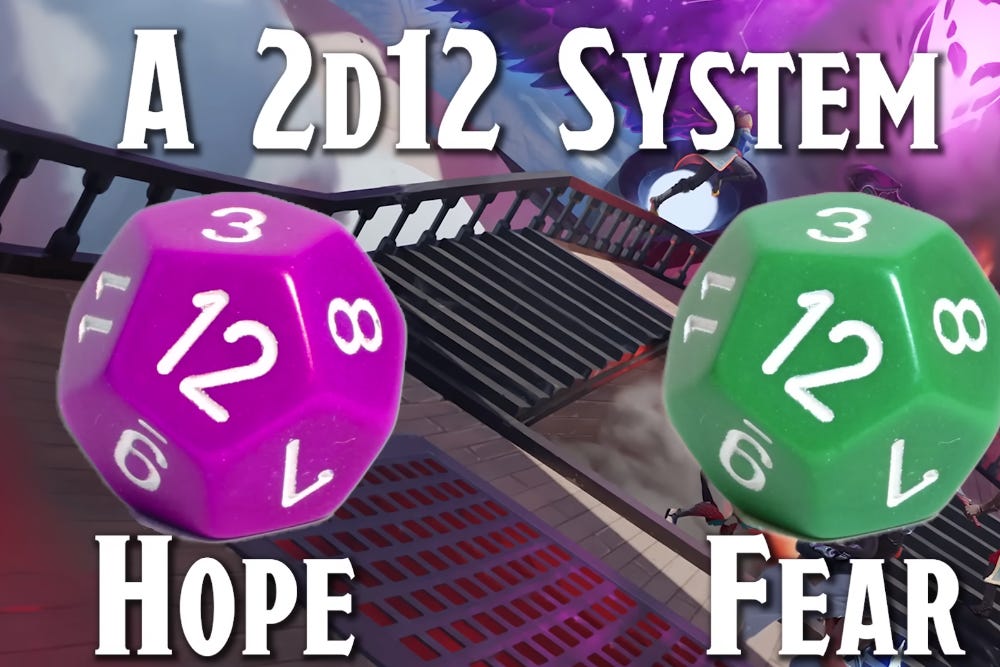
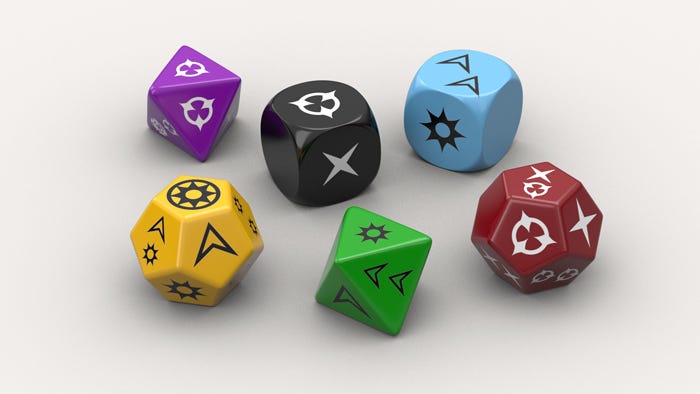
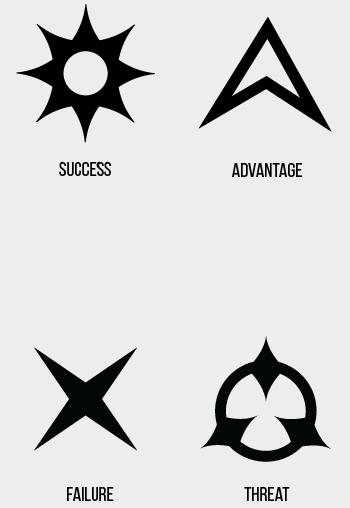
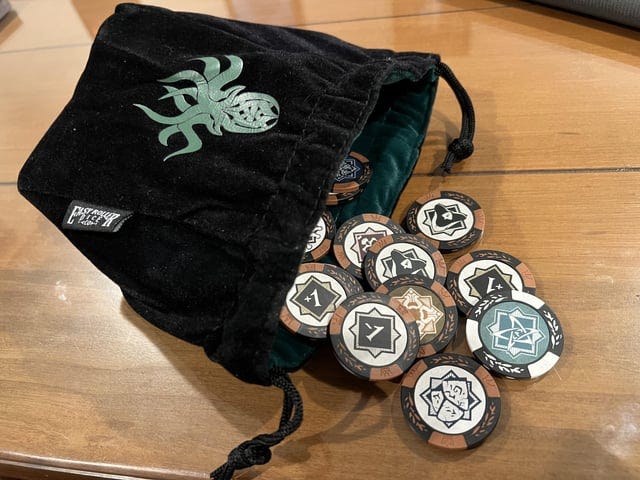
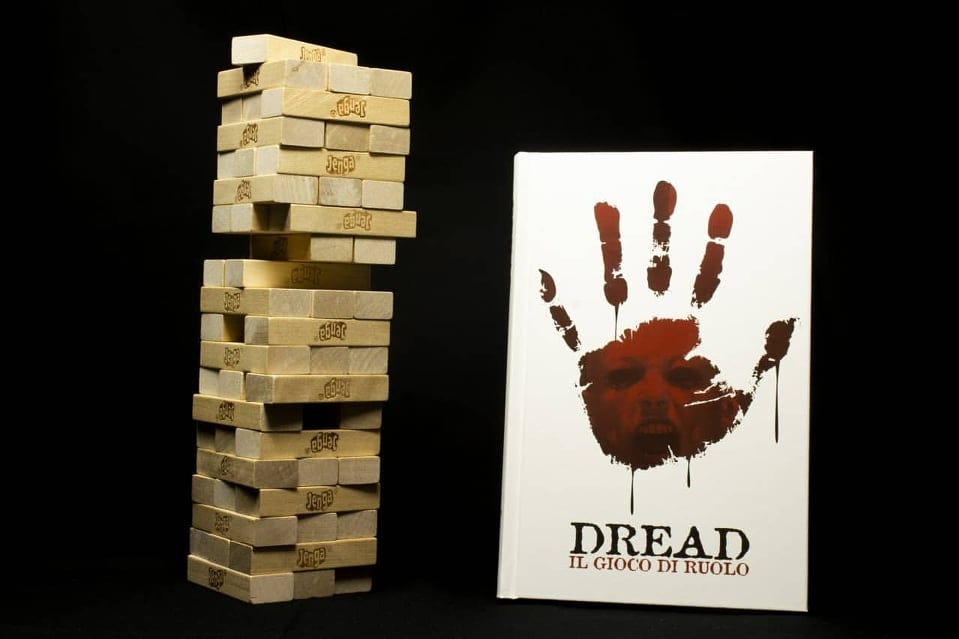
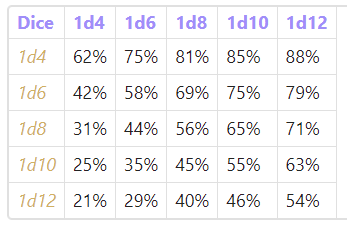

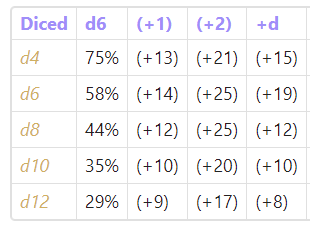
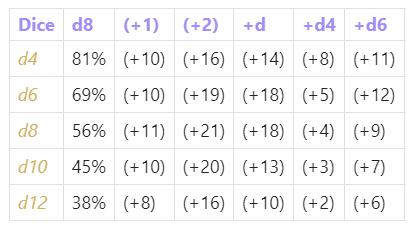
Your contributions keep going better and better! Rock on!